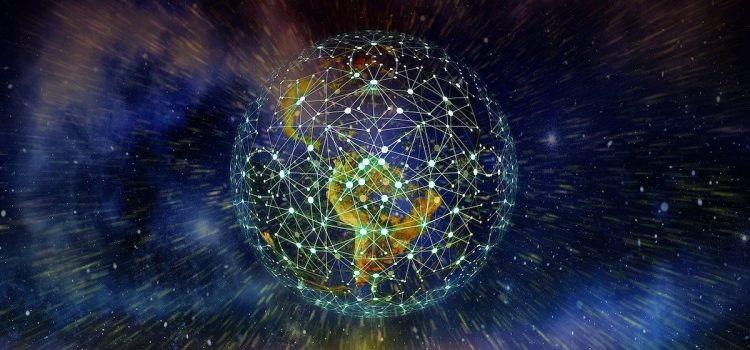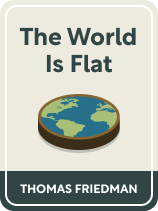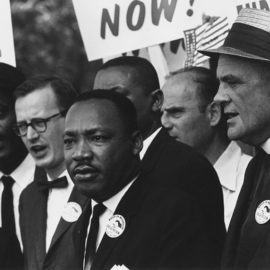

This article is an excerpt from the Shortform book guide to "The World Is Flat" by Thomas L. Friedman. Shortform has the world's best summaries and analyses of books you should be reading.
Like this article? Sign up for a free trial here.
What are the origin and history of globalization? When—and how—did globalization start?
Around the turn of the 21st century, the world changed more dramatically than perhaps at any other time in history. Seemingly all at once, shifts in the political landscape, technological advancements, and collaborative business practices came together to create a new globalized society.
Keep reading to learn how this seemingly-sudden change was in the making for centuries.
The Origin and History of Globalization
In his book The World Is Flat, Thomas L. Friedman argues that the globalization of the modern era is happening at an unprecedented pace. Because of this, individuals in the 21st century will have more power and opportunity than in previous generations—especially non-Western and non-white individuals. The world is thus becoming less stratified and flatter.
To better understand this argument, Friedman discusses the origin and history of globalization, which he breaks down into three periods.
The Period of Nations (1492-1800)
Starting with Columbus’ journey to the Americas, which opened up global trade, in this era, powerful nations and governments drove globalization. Western European, imperialist nations such as Great Britain, Portugal, and Spain, did most of the work, as they sought to journey across the world to advance their empires and trade globally.
(Shortform note: Friedman argues that globalization was kickstarted by European imperialism. But why did European countries become imperialist powers in the first place? In Sapiens, Yuval Noah Harari argued that the main reasons for Europeans’ dominance is their focus on science and their cultural homogeneity. Scientific breakthroughs gave European powers the ability to travel around the world and conquer lands with advanced weaponry. Also, because European countries shared many values and sociopolitical structures, countries like Portugal and Spain were more willing to follow England’s imperialist ways.)
The Period of International Companies (1800-2000)
In this period, large, multinational corporations drove globalization. With the Industrial Revolution in full swing, companies were able to expand globally in search of new markets and labor: Inventions like the steam engine and railroads made trade cheaper and quicker in the 19th century. Then, in the 20th century, inventions such as the telegraph, telephone, and later the computer and satellites, made communication cheaper and quicker. The combination of accessible trade and communication led to an economy in which companies could take advantage of global opportunities.
(Shortform note: In Naked Economics, Charles Wheelan, like Friedman, defines globalization as the increase in international trade that exploded in the 20th century, when exports went from 8% of global GDP in 1950 to around 25% by the end of the century. Wheelan notes that while companies were able to profit from this, it also helped people, and the economy as a whole, in several ways: 1) It lowered the cost of goods and services globally. 2) It gave people access to a larger variety of goods and services. And 3), it increased productivity: When people can rely on others for more of their goods and services, more time and energy can be spent working.)
The Period of Individuals (2000-present)
With personal computers, the internet, and new software at their disposal, people now have the ability to communicate, collaborate, and compete with others globally. Thus, the top-down, hierarchical structures that controlled the world to this point are giving way to decentralized, crowd-sourced systems: Though governments and corporations still hold a lot of sway, this third era of globalization has given power to billions of people who were previously powerless.
The World Became Flattest at the Turn of the 21st Century
Friedman argues that, around the year 2000, these forces of globalization—political change, technological advancements, and collaborative business practices—coalesced and began reinforcing each other in life-altering ways.
Through technology, the world has become more interconnected. At the turn of the century, people and businesses were beginning to figure out how to make the most of the new tools at their disposal. Around the same time, because much of the Eastern world was opening up, billions of people from China, India, and the former Soviet Union were also joining the playing field. The result, for better or worse, has been a period of change, collaboration, and innovation unlike any other time in human history, with implications for the health and success of all nations.
| Globalization by the Numbers A look at the data shows just how rapidly globalization developed in the 1990s and 2000s. From 1990 to 2007, the value of the global flow of goods, services, and financial investments went from around $5 trillion to $30 trillion, which was about 53% of the world’s GDP. Due to the Great Recession and other factors, however, around 2008 these numbers began to drop, and global trade is not expected to return to this level of growth for the foreseeable future. Some suggested the drop in global trade marked the end of globalization, but others contend it’s just taken on a new form. Instead of the rapid increase in the global trade of goods and services, we now have a rapid increase in the global flow of information and data. Digital media platforms, like YouTube and Facebook, and e-commerce websites, like Alibaba and Amazon, have exploded in popularity. From 2005 to 2014, the data exchanged across continents (information, internet searches, digital communication, and so on) increased by a factor of 45. |

———End of Preview———
Like what you just read? Read the rest of the world's best book summary and analysis of Thomas L. Friedman's "The World Is Flat" at Shortform.
Here's what you'll find in our full The World Is Flat summary:
- How the world is becoming one globalized society
- The potential costs and benefits of a flatter world
- How you can best contribute to a globalized society






